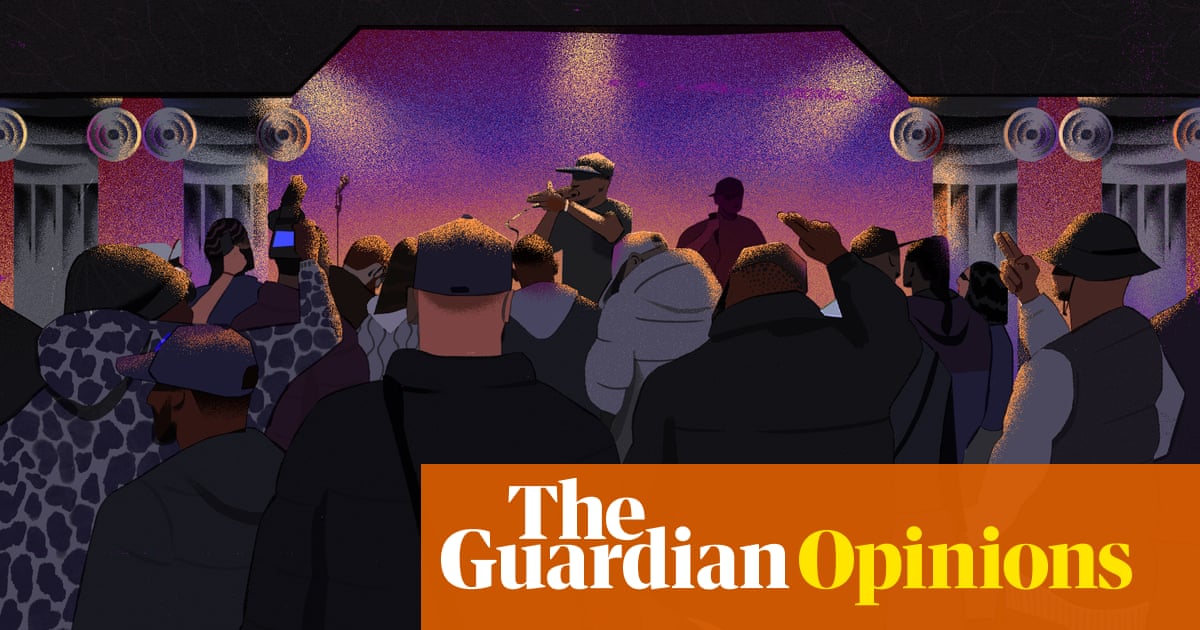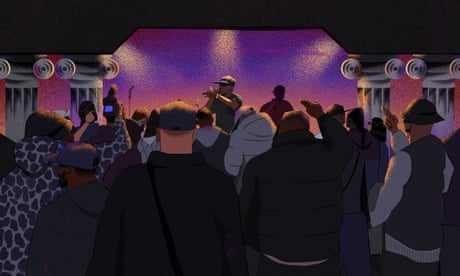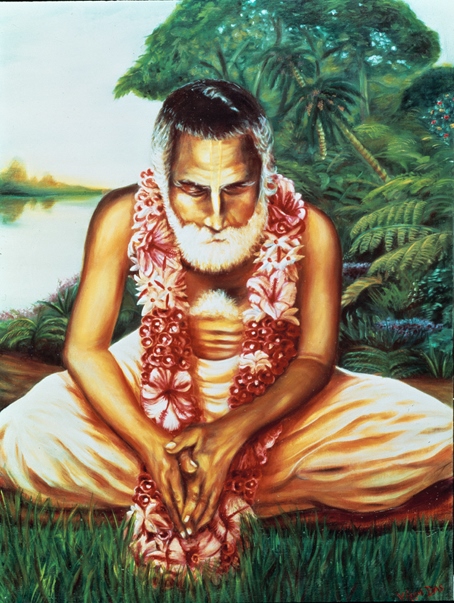
The police use a negative framing, but there is something positive in this potential for catharsis that can help so many see past the doom and gloom. It can turn an outpouring of pain into a bottling of strength because its logic suggests that when rappers step into the recording studio to perform lyrics they’ve written, it can become a vital opportunity to shed the skin of something they might have experienced, seen or heard about in their community. It can amount to a lone medium of expression in a harsh world that otherwise affords marginalised young people little room to breathe.
For those who experience British society as a web of financial insecurity, intergenerational trauma, authoritative tellings-off and insidious microaggressions – in other words, as an inherently violent place – listening to and watching music content can provide relatable entertainment, life-saving lessons and pent-up emotional release. In 2023, YouTube is the Greek amphitheatre. In my search for solutions, including looking at how music forms have been effectively criminalised, I’ve found it helpful to trace the etymology of a word and idea that’s repeatedly used in common parlance but rarely interrogated: catharsis.
Have you ever felt renewed on your journey home after watching an immersive, moving film at the cinema? Perhaps hearing a sad song helped to lift a low mood, or an angry song motivated you to go harder at the gym. Maybe you’ve read a story about someone pulling through a challenge relatable to you, and it made you feel affirmed. That’s catharsis.
The specific slant of its definition has been hotly debated for centuries. But broadly speaking, catharsis was shorthand for the belief that tragic stories told in art can serve a moral and social, even medicinal, function. By making us empathic or scared on behalf of a fictional character, we confront and drain latent feelings of pity and fear that build up in our lives in a controlled setting. By shocking us into new modes of thinking, stories teach us ethical lessons about actions and consequences, and show us how to make effective decisions.
There might be some truth in this for a child who is too immature to differentiate between their rights and wrongs, facts and fictions. But lyrics are mostly just lyrics. Even if they are based in reality, they are delivered as performative and therefore contain the rich seeds of catharsis.
Over the past 13 years, hundreds of youth clubs have closed across the UK, spending per child in state education has fallen, mental health services have been dismantled and policies to criminalise young people have been rolled out by a Tory government trying to punish its way out of a violent crime epidemic. In this context of austerity, the padded, soundproofed booth that wraps around a microphone should be valued as a space in which young people who have experienced violence can communicate with the rest of us.
When we describe an experience as “cathartic”, what do we mean? Where does it come from? Why does it matter?
Whether it’s horror films, video games or the American gangsta rap that emerged from hip-hop’s golden era in the 1990s, debates about the exaggerated dangers of violent art have dragged on for decades. UK rap and drill music is no different.
In ancient Athens, people would gather at the amphitheatre to watch tragedies play out on the stage as a form of entertainment. While helping to devise the origins of western philosophical thought in his classic text, Poetics, Aristotle would briefly mention the Greek word “katharsis”, to describe the purgation or purification of emotions felt by performers and audiences of drama.
But philosophy need not remain the historical plaything of armchair thinkers. There are many ways of applying it to the complexities of 21st-century life. Indeed, alongside thought experiments such as Plato’s allegory of the cave and social designs such as Jeremy Bentham’s panopticon, I’ve discovered a constant, universal resonance in my discussions about city life with teenagers and adults alike whenever I explain catharsis.
For some boys and young men I’ve worked with, the studio can – to use the language of Aristotle – allow for the rare purgation of traumatic emotions that have built up from subsistent daily life, avoiding fatal conflict and heavy-handed over-policing. It can be a purification of the spirit, a cleansing of shame or regret, and a lightening of hidden psychological loads that, if left unchecked, can stunt growth and affect educational achievement. And when the artist’s process is complete – they remove their headphones and step out of the booth – if handled sensitively by a trusted adult, an authentic conversation about the roots of their creation might take place. In this version of events, music heals.
Ciaran Thapar is a London-based youth worker and author of Cut Short. He writes about youth culture, social change and city life and has a weekly newsletter called ALL CITY, in which a version of this article first appeared
And that’s just for the performer. But what about the listener? Critical discourse about the young audiences that violent music attracts tends to be voiced from a place of concern and judgment. There is a quick assumption that, because lyrics themselves can be horrific in their descriptions and provocations, their impact on the vulnerable young person who hears them must be horrific, too.
It is there for the student who feels scared on their bus journey to and from school because of local, tit-for-tat territorial feuds, because of the rising prevalence of knife-carrying in their friendship group, or the murder of someone they grew up playing football with. It is there for the frustrated teenager who turns up hungry at the youth club after being sent home early from their pupil referral unit while trying to avoid the influence of drug-dealing elders and the stresses of an empty-fridge home life. For the teenager who has witnessed more stabbings and shootings than you or I could imagine, yet feels judged by their teachers or police when they act out of turn.
Do you have an opinion on the issues raised in this article? If you would like to submit a response of up to 300 words by email to be considered for publication in our letters section, please click here.
The evolution of UK rap and drill music is not perfect. But it reflects the world and society we have built for ourselves. And it’s always worth remembering that it is the storytelling of a voiceless cohort. Understanding music’s potential as a form of catharsis should be a priority for those of us who care about challenging the violence that its lyrics speak about.
- How should we understand violent songs, beyond simply calling them the creation of a folk devil? There must be another way. Because in my youth work with teenagers over the past decade – which has included mentoring many rappers with experience of serious youth violence – I’ve come to view the narratives of music as a force to be harnessed and critiqued, not suppressed and censored.
- Earlier this year, I wrote an article challenging the prejudicial mining of music as criminal evidence in British courts. I argued that rap and drill lyrics should not be relied upon to convict people, especially without forensic proof of their alleged crime.



